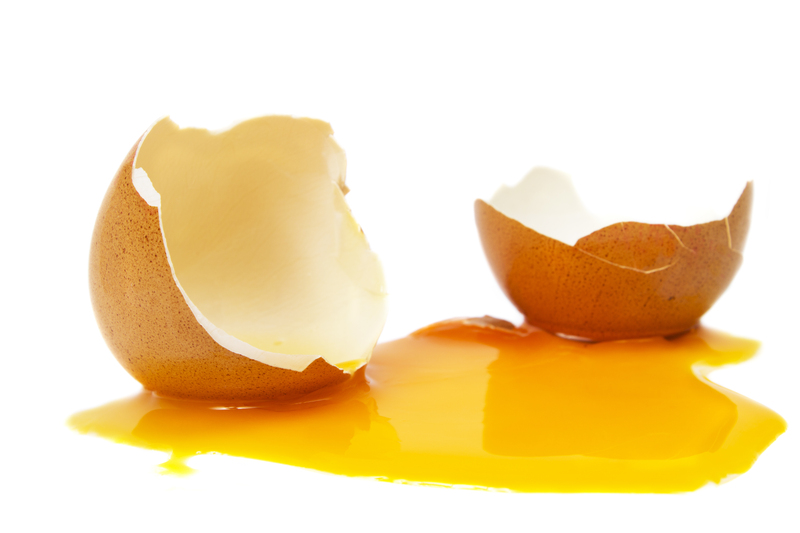Natural Remedies for Mould-Free Window Sills
Posted on 30/05/2025
Natural Remedies for Mould-Free Window Sills
Discovering mould on your window sills is more than an aesthetic issue--it's also a potential health hazard and a sign of moisture problems in your home. If you're seeking eco-friendly strategies and natural remedies to keep window sills mould-free, you're in the right place. This comprehensive guide explores chemical-free solutions, preventative tips, and effective cleaning methods that protect both your home and your health.

Understanding Window Sill Mould
Mould, a type of fungus, thrives in damp, humid environments and can quickly colonise surfaces like window frames and sills, especially during wet and cold seasons. The main reasons for mould growth on window sills include condensation, poor ventilation, and water leaks. Besides causing an unsightly mess, indoor mould may trigger allergic reactions, respiratory issues, and exacerbate asthma symptoms.
- Mould Hotspots: Window sills, especially in bathrooms and kitchens
- Primary Causes: Condensation, cold-weather humidity, and inadequate air flow
- Risks: Health risks, structural damage, permanent staining
Why Choose Natural Remedies?
Natural mould removal techniques are gentle on your home and the environment. Unlike harsh commercial cleaners, these methods minimise indoor air pollution and lower your exposure to chemicals that may cause skin irritation or exacerbate allergies.
- Safe for Children & Pets: Most natural solutions are non-toxic
- Eco-Friendly: Biodegradable ingredients reduce environmental impact
- Cost-Effective: Most remedies use common pantry staples
Identifying and Assessing Mould on Window Sills
Before you grab your spray bottle, it's important to identify the extent and type of growth on your mouldy window sills:
- Black Spots: Usually the common black mould (Aspergillus, Cladosporium, or Stachybotrys)
- Grey or Greenish Streaks: Often Penicillium or Alternaria
- Powdery White Film: Sometimes mistaken for dust; could be a mildew
Note: For extensive or stubborn mould infestations, or if the window frame is badly deteriorated, consult a professional for safe removal and repair.
Top Natural Methods to Remove Mould from Window Sills
1. White Vinegar: The Household Hero
White vinegar is well-known for its antimicrobial and antifungal properties.
- How to Apply:
- Pour distilled white vinegar into a spray bottle (no need to dilute).
- Spray liberally on the mouldy window sill.
- Let it sit for at least one hour to break down the spores.
- Wipe with a clean, damp cloth.
- Tip: For persistent stains, use a soft-bristle brush to gently scrub the area.
2. Baking Soda: The Gentlest Abrasive
Baking soda is a safe, non-toxic cleanser that deodorizes and disrupts the growth of fungi.
- How to Use:
- Mix one teaspoon of baking soda with two cups of water in a spray bottle.
- Shake well and spray onto the affected area.
- Scrub gently with a damp sponge and wipe clean.
- For Tough Mould: Make a paste with baking soda and water, spread on the spots, and leave for 15 minutes before scrubbing and rinsing.
3. Hydrogen Peroxide: Natural Disinfectant
Hydrogen peroxide (3%) is excellent at mould removal from window sills and kills fungi on contact.
- Spray directly onto the surface.
- Let sit for 10-15 minutes to penetrate the mould's cell structure.
- Wipe with a damp microfibre cloth.
4. Tea Tree Oil: Anti-Fungal Powerhouse
Tea tree oil is one of the most effective essential oils for tackling the stubborn spores that cause window sill mould.
- Recipe:
- Mix 1 teaspoon of tea tree oil with 1 cup of water in a spray bottle.
- Shake vigorously and spray the mouldy surfaces.
- Leave to dry; do not rinse (the residual oil continues to inhibit regrowth).
- Note: Tea tree oil is potent; always use gloves and avoid ingestion.
5. Lemon Juice and Salt: Citrus Antimicrobial Action
Lemons have a natural acidity that breaks down mould while leaving a fresh, clean scent.
- Mix fresh lemon juice with a pinch of salt for mild abrasiveness.
- Apply to the area with a sponge, leave for 5-10 minutes, then rinse thoroughly.
Natural Preventative Measures for Mould-Free Window Sills
Once you've removed visible mould from your window sills naturally, prevention is the next critical step. Here's how to prevent a recurrence and maintain healthier indoor air quality:
1. Improve Ventilation
- Open windows regularly to allow moisture to escape.
- Install trickle vents if your windows support them.
- Use extractor fans in bathrooms and kitchens.
2. Reduce Indoor Humidity
- Use a Dehumidifier: Keeps air drier, especially in winter.
- Dry Clothes Outside: Hanging damp laundry indoors raises humidity rapidly.
- Avoid Overwatering Plants Near Windows: Excess moisture from potted plants raises humidity at the sill area.
3. Wipe Down Window Sills Frequently
- Use a dry or microfibre cloth to quickly remove moisture after rain or heavy condensation.
- Inspect regularly for early signs of growth.
4. Address Window Leaks
- Check for poor seals, damaged caulk, or cracked panes, and repair promptly to keep water out.
- If you notice repeated dampness despite cleaning, it might signal a need for window or roof maintenance.
5. Use Natural Preventative Sprays
- Create a DIY anti-mould spray by mixing:
- 1 cup of water
- 2 tablespoons white vinegar
- 5 drops essential oil (tea tree, eucalyptus, or lavender)
- Spritz lightly onto clean window sills to discourage regrowth.
Maintaining Wooden vs. uPVC Window Sills Naturally
The type of sill you have influences cleaning approaches and the persistence of window frame mould:
- Wood: More vulnerable to water damage and concealed decay. Wipe up spills immediately and apply natural wood oil to seal the surface after cleaning.
- uPVC: Easier to clean; most natural remedies above are safe for plastics, but always test in a small area.
- Metal/Aluminium: Rarely affected, but ensure no paint flaking or corrosion occurs with wet cleaning.
Signs of Deeper Damage
- Soft, crumbling wood after cleaning indicates rot. Replace that section promptly.
- Persistent black stains that reappear quickly might signal hidden leaks or gaps--seal as needed.
FAQs About Natural Mould Removal for Window Sills
Can baking soda and vinegar be used together?
While both are excellent as solo cleaners for natural window sill mould removal, their reaction (fizzing) can neutralise their power. Use them separately for best results--vinegar first, then a baking soda wash afterward.
How often should I clean window sills to keep mould away?
Wipe sills weekly, even if you don't see visible dirt. After heavy rain or cold nights, check for condensation and dry thoroughly to prevent mould formation on window sills.
Are these remedies safe for all surfaces?
Natural ingredients are gentle, but always spot-test in a hidden area before widespread application, especially on stained woods or painted surfaces.
Will vinegar or tea tree oil kill mould spores completely?
Vinegar and tea tree oil are very effective at killing most indoor mould spores, but preventing moisture build-up is equally important to ensure spores don't return.
Additional Tips for Healthy, Mould-Resistant Window Sills
- Install Moisture Traps: Place silica gel packets or DIY moisture absorbers along problematic windows.
- Utilise House Plants Wisely: Air-purifying plants (such as peace lilies or ferns) help balance humidity, but don't crowd them on window sills.
- Polish Wooden Surfaces: Applying a beeswax or olive oil finish can add another layer of natural protection.
- Monitor Indoor Humidity: Aim to keep your home's humidity between 30-50% year-round.

When to Call a Professional
If your window sill mould covers an area larger than a square foot, or returns rapidly after multiple cleanings, you may be dealing with extensive leaks or structural damage. In these cases:
- Seek professional assessment for hidden moisture or rot.
- Avoid disturbing large infestations, as this can release spores into the air.
- Consider upgrading windows or sills if decay is advanced.
Conclusion: Fresh, Clean Window Sills Without Chemicals
Natural remedies for mould-free window sills are practical, affordable, and safeguard your family's health while reducing environmental impact. By combining cleaning, prevention, and regular inspection, you'll enjoy beautiful, mould-resistant window sills all year round. Remember to prioritise ventilation, monitor humidity, and tackle any water leaks promptly--the keys to a fresher, healthier home.
Summary of Natural Cleaning Solutions:
- White vinegar for deep mould removal
- Baking soda for gentle scrubbing
- Hydrogen peroxide as a disinfectant
- Tea tree oil and lemon for natural anti-fungal action
For more tips on maintaining a healthy, safe home environment, explore our related articles or subscribe for regular natural cleaning advice.





